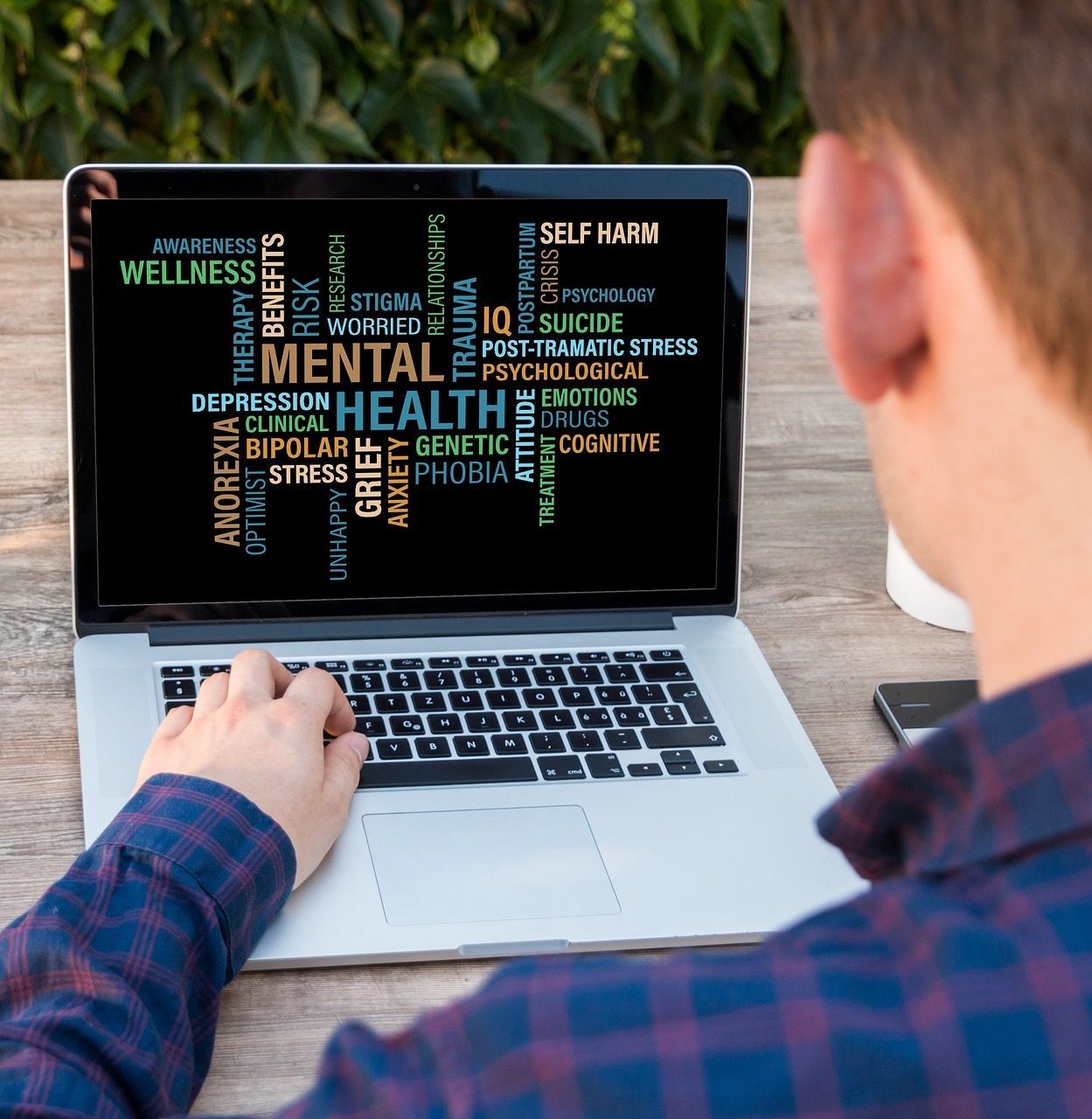Accepting Uncertainty
It’s hard to relate to Life Before the Pandemic. It’s like there is a line drawn in the sand between then and now , and the sand on that side seems to have drifted to a distant shore. But one thing hasn’t changed and that is a perspective of mine that was true before and has become more emphatically so since. Pre-COVID, I frequently posited to clients that one of the key metrics of mental health is the extent to which one is able to dangle in the uncertainty of the unknown. With that in mind, if we consider the last fourteen months or so—which history will likely record as one of the most dramatic eras of uncertainty most of us will face in our lifetimes, in terms of public health, politics, crime, and social upheaval—it’s fair to say our “dangle capacity” has been put to serious test. If the stats on our collective mental health are accurate, it has become apparent we’re not scoring very well on that key metric.
The mistake people make in grappling with anxiety around the unknown is that so often, they seek to extinguish the “uncertainty” rather than their discomfort about the “dangling” part. Exacerbating this is our current culture, the mouthpieces for which have reinforced the notion that we simply can’t handle—actually we shouldn’t ever be required to suffer!—much discomfort with some concepts and ideas. Trigger warnings are a good example of this; when assigned to works of literature in educational settings, or attached to films or television shows, they reinforce the idea that a “trigger” is something from which people must shelter themselves. Similarly, our social media platforms, by censuring what they deem “sensitive” content, also undermine resilience, as if there are some ideas that are just too dangerous to leave laying around. An additional contribution was made by the generation of what came to be known as “helicopter parents.” Starting in the 1990’s-ish, these parents began producing an anxious cohort of young adults, all raised to fold like lawn chairs in the face of difficulty or fearful circumstances, with uncertainty being a preeminent offender among the latter. The overall message has been that anxiety in all its forms must be erased—Xanax’ed off the face of our consciousness—rather than “accepted” and dealt with constructively. But trying to cancel the uncertainty is sort of the opposite of what takes place in exposure therapy. Exposure therapy is the empirically validated, go-to intervention for anxiety/panic related disorders. In this sort of therapy, the distress of the exposure is diluted through repetition of contact and acquired acceptance is the key to “curing” the abreaction to a thing, a circumstance, or an idea.
“Uncertainty avoidance” can be observed in many decisions we make in our personal and professional lives. We settle for unsatisfying relationships with partners because the thought of going it alone is too uncertain. We settle for employment situations that drain us of our vitality because they seem secure. We repeatedly order the same things at our favorite restaurants because we know we like this, and what if we didn’t like that—something new and fraught with risk!—as much? And younger adults—too frequently overwhelmed by the “uncertainty of the unknown”—angle for marriage to current partners, imagining that insulation from uncertainty is a greater imperative than true readiness or partner desirability. Fearfulness about uncertainty leads to poor choices and smaller, more mediocre lives and relationships.
So, how do we acquire more acceptance of the uncertainty of the unknown?
Here are a few tips to help you “Master the Dangle:
Stop telling yourself you “can’t stand it!” If you’re holding tightly to the idea that uncertainty is simply intolerable, guess what? It will be. Instead, start running a different script, one that says you can, and you will “stand it.” In other words, embrace the discomfort and work to ease it. And really, you must, because despite all of our floundering to make it go away, in the end we are obliged to survive it. Let’s do that more constructively!
Determine if there IS anything you can do to make a situation less “uncertain.” While this particular lesson might not work for something like, say, a global pandemic about which there are multiple and competing versions of what is the “science,” under more usual circumstances, doing some research—like into the statistical risk of some feared thing occurring—can be part of a useful cognitive strategy. Planning also can, at times, mitigate our fearfulness about uncertain unknowns. For example, what would you do if you did lose your passport on your vacation? Having an actual game plan that would apply in an imagined catastrophe is a good tool.
Train your body to calm down. Whenever we get caught up in anxiety of any sort, it’s not just “in our head.” Anxiety triggers the fear center of our brain which prompts the release of cortisol and adrenaline, which in turn yield specific responses from the sympathetic nervous system (SNS). The SNS response accounts for symptoms like increased heart rate and blood pressure, tension in the neck/shoulders/chest or elsewhere in the body, jitteriness, nausea, dry mouth, flushing, and the inability to sleep. Cultivate your awareness of where in your body you feel the anxiety of uncertainty and address the somatic symptoms you’re experiencing first.
Train your brain to redirect your thoughts. Once the body is calm, you can make better sense of your thoughts (and in fact, unless your body is calm, the prognosis for being able to do so is poor). Observe what you are telling yourself about your situation, about how you “can’t stand this!” uncertainty, about what calamity and mayhem might ensue from all these unknowns, and reframe these distortions. There are many cognitive strategies that can be applied, once a person has achieved a calmer body, to redirect unproductive thoughts that are controlling your experience.
One example of a cognitive strategy would be an “evidence to the contrary” exercise, wherein a distorted, fearful thought like “If this continues, I will lose my mind!” is subject to intense objective scrutiny. What evidence do I have that this will be the likely outcome? Have I ever “lost my mind” in previous moments of uncertainty? What do I really mean by “lose my mind?” Do I actually mean “I’ll continue to be really uncomfortable,” and I wish I didn’t have to? In what past difficult circumstances have I ever demonstrated the ability to cope with uncertainty, or discomfort? If I’ve gotten through things before, why should I think I won’t be able to now? ….and so on, until you realize your own thought—the way you are describing the thing to yourself—is the actual source of the anxiety, not the circumstance, event, or idea.
Care about the clock not the calendar. While remaining in the present sounds like Mindfulness 101, it’s actually a varsity-level skill to cultivate. The ability to remain “in the moment” has long been pursued by the yogis and Zen masters and AA programs but remains elusive to most people, particularly if they’ve not worked through the lower-level Dangle Coursework. But think of it this way: the future is just a big pile of “todays,” so intentionally embracing NOW—the hours on the clock left in today, not the pages of the calendar stretching out to infinity—is really the best hedge against the discomfort of the future’s uncertainty.
If your anxiety is a significant problem, it is important to seek help. Cathedral Counseling Center’s licensed therapists are experienced in working to address a board array of life stresses. To start, you can give us a call at (312) 252-9500 ext. 130.
-
Elisabeth Ihlenfeld, LCPC, CCTP-II, CMHIMP is a therapist at Cathedral Counseling Center and works with a range of clients struggling with anxiety, mood and personality disorders, and substance over-use and food/body issues, all of which share a common core of emotional dysregulation. Working with clients to “up” and/or “down'' regulate their affective experiences—within the context of a psychodynamic practice, which seeks to reconcile the origin of their difficulties and identify obstacles to change—facilitates improvement in their presenting issues, overall sense of self, and in their relationships with others.











